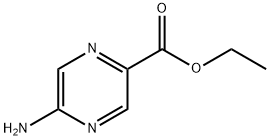how does the number of electrons in an oxygen atom compare to other elements in the periodic table? Are there different energy levels where these electrons are located within the oxygen atom, and if so, how many electrons occupy each level? Also, what role do these electrons play in oxygen's chemical reactivity? Do the electrons in oxygen participate in bonding with other atoms in a specific way because of their number? And how does the number of electrons in oxygen change when it forms ions?
In an Oxygen Atom, Exactly How Many Electrons Are There?
Related Encyclopedia
Related Products More >
-
- 61790-53-2
- equest For Quotation
- 25kg
-
- 61790-53-2
- equest For Quotation
- 1ton
-
- 90095-35-5
- equest For Quotation
- 25kg/Cardboard Drum
-
- 90075-82-4
- equest For Quotation
- 25kg/Cardboard Drum
-
- 9002-10-2
- equest For Quotation
- Bottle,barrel,cargo,container,etc.
-
- 82248-59-7
- equest For Quotation
- 25kg/Cardboard Drum
-
- 82248-59-7
- equest For Quotation
- 1kg/bag;25kg/Cardboard Drum
-
- 82005-44-5
- equest For Quotation
- 25kg/ea




 沪ICP备2021018848号-5
沪ICP备2021018848号-5

Now, about the energy levels in an oxygen atom. Yeah, there are different energy levels. We can think of these energy levels like floors in a building. The electrons are like little particles that live on these floors. In an oxygen atom, the first energy level can hold a maximum of 2 electrons, and that's where 2 of oxygen's electrons are. The second energy level can hold up to 8 electrons, and the remaining 6 electrons of oxygen are in this second level. This arrangement is key to understanding oxygen's properties.
When it comes to oxygen's chemical reactivity, these electrons play a massive role. Oxygen is really reactive. It wants to gain 2 electrons to fill its outer electron shell completely. You see, atoms are most stable when their outer electron shell is full. So, oxygen will readily react with other elements to get those 2 extra electrons. For example, when oxygen reacts with hydrogen to form water (H₂O), each hydrogen atom gives its 1 electron to oxygen. Oxygen then has a full outer shell of 8 electrons in the second energy level, making it more stable.
Because of its 6 outer electrons, oxygen participates in bonding in a specific way. It often forms covalent bonds, like in water. In a covalent bond, atoms share electrons. Oxygen will share electrons with other atoms to try and fill its outer shell. It can also form ionic bonds. In an ionic bond, one atom gives away electrons to another. Oxygen can gain electrons from metals like sodium. Sodium has 1 electron in its outer shell, and it's easier for it to give that electron away than to try and gain 7 more. So, sodium gives its electron to oxygen, and they form an ionic compound.
When oxygen forms ions, its electron number changes. Since oxygen wants to gain 2 electrons to be stable, it forms an ion with a charge of -2. We call this an oxide ion. So, instead of having 8 electrons, it now has 10 electrons. This change in electron number completely changes how oxygen interacts with other substances. In the body, for example, oxide ions are involved in many important chemical reactions. They can help break down food during digestion or be part of the process that gives us energy. Understanding how the electron number changes in oxygen when it forms ions helps us understand a whole bunch of chemical processes that happen all around us and even inside our own bodies.
Now, these electrons don't just float around willy-nilly. They're organized into different energy levels, or shells, within the atom. Oxygen's electrons are spread out like this: two in the first shell, four in the second shell, and none in the higher shells. So, the first shell is full, with two electrons, and the second shell is almost full, with four more.
These electrons are crucial for oxygen's chemical reactivity. They're what make oxygen so reactive and eager to bond with other elements. Since the second shell isn't quite full, oxygen atoms are always looking to pick up a couple more electrons to fill it up. That's why oxygen is so good at forming bonds, especially with elements that have extra electrons to share.
When oxygen bonds with other atoms, it does so in a specific way. It usually forms covalent bonds, where it shares its electrons with other atoms to create stable molecules. This sharing helps balance out the electrons in the atoms involved, making them more stable.
And if oxygen loses or gains electrons to form ions, its electron count changes. For example, if oxygen gains two electrons, it becomes a negatively charged ion called an oxide ion. On the other hand, if it loses electrons, it becomes a positively charged ion, but this is less common.
So, oxygen's six electrons play a big role in its chemical behavior, helping it bond with other elements in specific ways and giving it unique properties that make it so important in our world.
Now, within the oxygen atom, there are different energy levels where these electrons are located. Oxygen has 2 electrons in the first energy level (n = 1), which is the closest to the nucleus. The first energy level can hold a maximum of 2 electrons. Then, it has 6 electrons in the second energy level (n = 2). The second energy level can hold up to 8 electrons.
These electrons play a crucial role in oxygen's chemical reactivity. Oxygen wants to gain 2 more electrons to achieve a full outer shell of 8 electrons, which is a very stable configuration. This is why oxygen is so reactive. It tends to form bonds with other atoms in a specific way. Usually, it forms covalent bonds where it shares electrons. For example, in water (H₂O), each hydrogen atom shares one electron with the oxygen atom, and oxygen shares two electrons in total.
When oxygen forms ions, the number of electrons changes. If oxygen gains 2 electrons, it becomes an oxide ion (O²⁻). In this case, it now has 10 electrons. This gain of electrons gives the oxide ion a full outer shell, making it stable. The change in the number of electrons also affects its chemical properties. The oxide ion is much more likely to form ionic compounds with positively charged ions like sodium (Na⁺) or calcium (Ca²⁺). So, the number of electrons in oxygen is a key factor in determining both its atomic structure, chemical reactivity, and the nature of the compounds it forms.